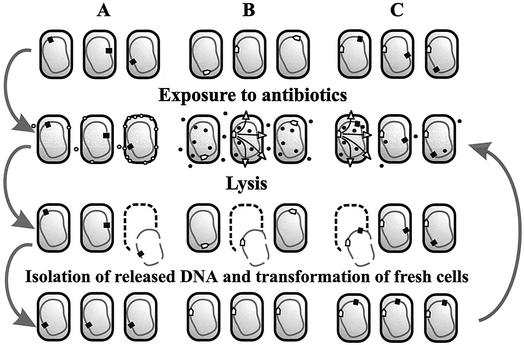FIG. 1.
SDR strategy. (A) The simplest form of SDR, in which bacteria mutagenized by random insertion of a marker gene (black square) are selected for hypersusceptibility to agents causing bacterial lysis, such as β-lactam antibiotics (open circles). For the ease of presentation, hypersusceptible mutants are presumed to accumulate more of the lytic agent, although the exact mechanism of hypersusceptibility can be different. (B) Selection of a strain that lyses in response to a drug (filled circles). A promoterless lysis cassette of bacteriophage λ fused with the selectable marker (white arrow) is randomly inserted into the chromosome. In clones where it is inserted under the control of a drug-activated promoter, the presence of the drug causes cell lysis. The SDR procedure selects such clones. (C) Use of SDR for isolation of mutants hypersusceptible to a drug that does not cause bacterial lysis. The procedure is essentially identical to the one shown in panel A, except that a lysis reporter strain, obtained as shown in panel B, is used as the host strain instead of wild-type bacteria.

